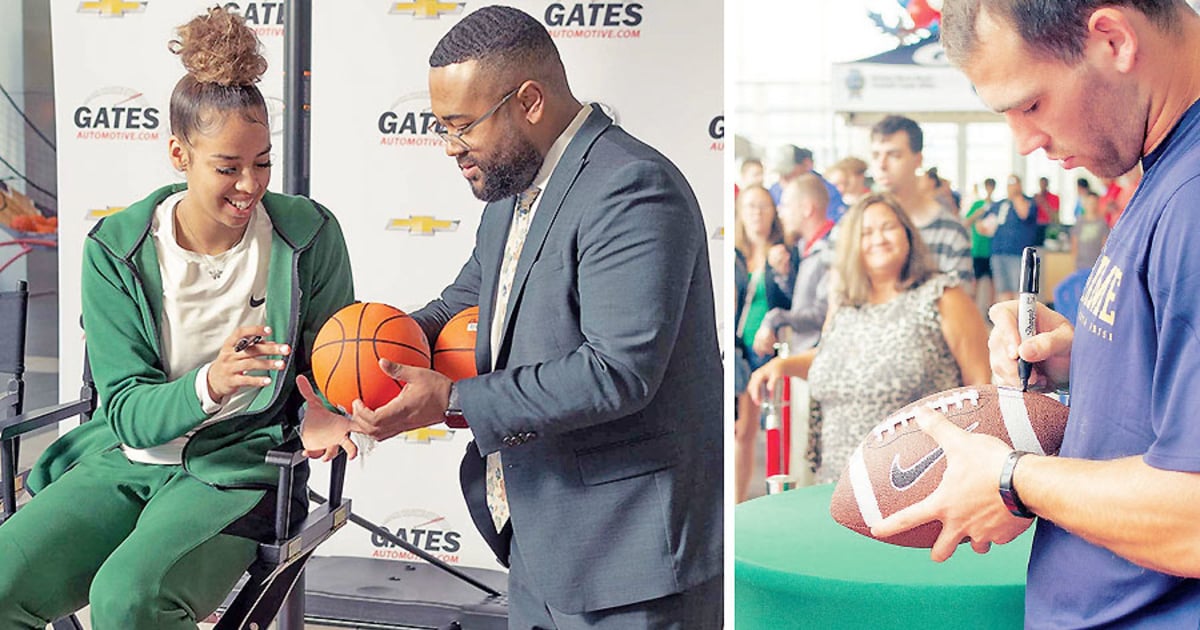
Until about two years ago, Gates Automotive Group focused its marketing efforts on monthly sales promotions that were aimed at consumers close to making a purchase decision.
That strategy has evolved. Now, the dealership group in South Bend, Ind., has emphasized brand awareness marketing that combines social media engagement, collaboration with local athletes and business leaders, giveaways and in-person meet-and-greets.
Gates, which sells new Chevrolets and Toyotas, started to think about other ways to tell its story after a social media post spotlighting a well-known salesman generated roughly 12,000 organic impressions, said Jordan Cox, Gates’ digital marketing manager. In December 2021, a music video the group created in collaboration with local artists produced similar results on Facebook and YouTube.
A sales promotion, by contrast, might get 160 impressions, Cox said.
“Since we’ve made that shift, we’ve definitely seen a positive feedback loop, just because now all of a sudden, we’re not trying to just sell cars, we’re trying to make people aware of us,” Cox said.
“Not only is it positive for our potential customers, but it’s also positive to retain our current customers,” he said. “It’s a way for us to continue getting in front of those people.”
Gates, which has two new-vehicle dealerships, two used-only stores and a body shop, sold 1,271 new vehicles and 4,291 used vehicles in 2022.
Its collaborative marketing strategy kicked off in earnest last year, with Cox and General Sales Manager Clint Emberton taking the lead. In March 2022, the dealership group teamed up with Mila Reynolds, a local high school basketball player at the time, to produce social media content that generated more than 12,000 organic views.
The dealership group later attributed three vehicle sales to customers who saw it, based on conversations the buyers had with sales managers, Cox said. In May, Gates partnered with the owner of a local meat market with a large social media following for a giveaway and marketing content.
In August, the group teamed up with University of Notre Dame football player Jack Kiser for a meet-and-greet at its Toyota store, a partnership under new NCAA rules allowing athletes to receive compensation for their name, image and likeness.
Cox said the group thought attracting 100 people to the showroom to meet Kiser would be a success. The event drew roughly double that number, he said, and related Facebook content — which the group paid to boost — drew more than 23,400 impressions. Four vehicle sales were attributed to the event, including one customer who took a test drive the same day, Cox said.
The group ran a promotion in April with professional angler Ron Nelson that included a drawing for a chance to fish with him.
Gates’ goal with its brand awareness efforts is to get in front of people with its name and story, generate positive feedback and ultimately produce more showroom visits and vehicle sales, Cox said.
Cox said the team has learned several things from the strategy, including the importance of narrowing down creative ideas to those that can be explained easily and quickly and that can get buy-in from leadership.
Not every social media post needs a paid marketing boost, he said. Cox said Gates only pays to promote a fraction of its posts, such as notices about upcoming events.
He likes to show videos to family, friends or co-workers to gauge their body language, noting whether they reach for their phones or begin to fidget to determine whether the videos need tighter cuts or more engrossing content.
And, he said, “the best camera you can shoot on is the one you already have. So whether it’s an iPhone, whether it’s a DSLR, whether you’re investing in better equipment, it doesn’t really matter.”
Focusing on brand awareness has long-term potential, Cox said.
The group is working to get its name in front of people who may not know Gates or have a connection to the group, as well as to stay top-of-mind for previous customers to get return business.
“We don’t go to consideration or even closing a deal when we’re trying to do that, because we’re not asking for the sale,” he said. “We’re not talking about our offering. All we are is talking about where we’re at and what we do. And then we immediately segue into something else.”